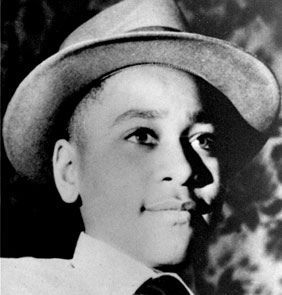Harper Lee, who died last week at the age of 89, holds a special place in the American literary world. Her Pulitzer Prize-winning novel, To Kill a Mockingbird, has been read by generations of school children as a treatise against Jim Crow racism and as an invocation to live honorably, but critics have had problems with the way the book handles questions of race.
Something we forget, in our endless rehashings of Mockingbird‘s many-layered themes, is that it was a historical novel. Patrick Chura points out that though the book was written in the mid-1950s, it is set during the mid-1930s. Under scrutiny, it turns out that Mockingbird gets many historical facts and chronologies wrong, but of course the novel’s real mission is its “participation in racial and social ideology that characterized not the Depression era but the early civil rights era.” In particular, the murder of Emmett Till and the 1955 trial that followed have been widely accepted as the inspiration for the trial at the heart of the novel.

The Till murder took place in a Mississippi still reeling from the 1954 Brown v. Board of Education desegregation decision. A continuing concern of the white power structure was, as Chura notes, “keeping the negro in his place,” with a particular preoccupation with the lurid fantasy of the “black rapist” who targeted white women. Cultural tensions roiled, laying the foundation for the murder of 14-year-old African-American Emmett Till, who allegedly whistled at a white woman and was then brutally beaten and killed by two white men.
Similarly, Lee’s Tom Robinson is accused of attacking a white woman. In the novel, Atticus Finch is assigned to defend Robinson—and does so to the best of his ability—despite the disapproval of his neighbors. The connections between the two cases run deeper: Till’s mother pointed out in interviews after the murder that her son had a speech impediment and that the “whistle” was likely unintended; a major moment in the book’s trial comes when Atticus Finch asks the accused to reveal his withered arm, which presumably would have made it impossible for him to have beaten the woman in the way her bruises indicated.
Mockingbird’s presentation of the African-American body as vulnerable—Tom Robinson is not only an innocent facing a death sentence, but he has only the use of one arm—feels surprisingly (and tragically) contemporary in our world of rampant police shootings and the resulting #BlackLivesMatter movement. As Ta-Nehisi Coates writes in his book, Between the World and Me (winner of the 2015 National Book Award), “I tell you now that the question of how one should live within a black body, within a country lost in the Dream, is the question of my life, and the pursuit of this question, I have found, ultimately answers itself.”
When Coates points out “the apparent permanence of racial injustice in America, the foolishness of believing that one person can make a change, and the dangers of believing in the American Dream,” we read its opposite in the message of Mockingbird. But this is decidedly not true of the prequel/sequel, Go Set a Watchman, which revealed Atticus Finch to be an embittered old racist. In the end, Chura writes, “the bodies of both Emmett Till and Tom Robinson were horribly mutilated by excessive racially provoked violence intended to send a message about the seriousness of the alleged transgression and the tenacity with which existing social codes would be identified by the white power structure.”
Whatever readers make of the way Lee’s novels probe America’s persisting plague of racism, perhaps what’s most significant to note is how their complexities stay relevant. It is still dangerous to be black in America. It is still fraught when white people write about it. One thing is certain: we will be discussing Harper Lee’s work for years and years to come.







